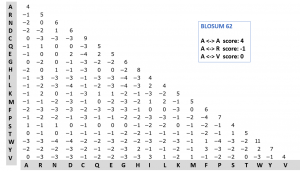Duration of the activity: 30 minutes
Recommended age : 15 years old and above
Paleogenomics
Chickenosaurus
– Your turn to play
It’s your turn to discover what the descendants of dinosaurs have become!
Context
The goal of this activity is to discover the data and the scientific approaches that have been used to study the relationship between dinosaurs and present-day birds.
Activity 1
To determine kinship ties, biologists look for what species have in common but also what distinguishes them. For that they use morphological data (for example, the shape of bones) or molecular data (DNA or protein).
The collagen protein is present in the bones of all vertebrates. It has been recovered in the fossilized bones of Brachylophosaurus canadensis and Tyrannosaurus rex, two species of dinosaurs which are thought to have disappeared some 80 and 68 million years ago, respectively!
Like all proteins, the collagen protein differs slightly from one species to another. These differences are a real gold mine to study evolution and the kinship ties that exist between different species.
Your turn to play
Here is the amino acid sequence of collagen from different species.
>Brachylophosaurus canadensis GATGAPGIAGAPGFPGARGPSGPQGPSGAPGPKGSAGPPGATGFPGAAGRGETGPAGPAGP >Tyranosaurus rex GATGAPGIAGAPGFPGARGAPGPQGPSGAPGPKGSAGPPGATGFPGAAGRGVQGPPGPQGP >Python bivittatus GSTGSPGIAGAPGFPGARGPAGPQGPSGAPGPKGNSGEPGAPGNKGDAGAGEPGPVGVQGP >Coturnix japonica (Japanese quail) GATGAPGIAGAPGFPGARGPSGPQGPSGAPGPKGNSGEPGAPGNKGDTGAGEPGPAGVQGP >Gallus gallus (chicken) GATGAPGIAGAPGFPGARGPSGPQGPSGAPGPKGNSGEPGAPGNKGDTGAGEPGPAGVQGP >Alligator sinensis GATGAPGIAGAPGFPGARGPSGPQGPSGAPGPKGNSGEPGAQGNKGDTGAGVQGPPGPAGE
Find the number of differences between the collagen sequence of Brachylophosaurus canadensis and the collagen sequence of the other species.
You can do this manually or using the computer program SIM – Alignment Tool for protein sequences
Complete the table and check your results.
| Species | Number of differences |
|---|---|
| Brachylophosaurus canadensis | 0 |
| Tyranosaurus rex | |
| Python bivittatus | |
| Coturnix japonica (Japanese quail) | |
| Gallus gallus (chicken) | |
| Alligator sinensis |
Activity 2
The approach used in activity 1 is a bit tedious and not completely finished: certain changes have more impact biologically than others.
That’s the reason why bioinformatic programs which compare sequences use a ‘substitution matrix’ to calculate the alignment score, i.e. the BLOSUM62 matrix.
These substitution matrices assign a value to each pair of amino acids (for example: A-A: 4; G-G: 0; A-R: – 1). The sum of these values gives the final score for the alignment.
BLOSUM62
In general, the substitution value is based on the degree of similarity of the two amino acids. If they are very similar (in terms of shape and physicochemical properties), the pair of amino acids will receive a high score. If the amino acids are very different, the pair of amino acids will receive a low score.

This table shows the scores, calculated using the BLOSUM62 matrix, for the comparison of the sequence of collagen from Brachylophosaurus canadensis with the collagen sequence from other species.
To verify the alignment scores 2 by 2, you can use the program SIM – Alignment Tool for protein sequences. Depending on the programs and the parameters selected, the scores can be different.
| Species | Number of differences | Score |
|---|---|---|
| Brachylophosaurus canadensis | 0 | 340 |
| Tyranosaurus rex | 6 | 304 |
| Python bivittatus | 15 | 258 |
| Coturnix japonica (Japanese quail) | 12 | 267 |
| Gallus gallus (chicken) | 12 | 267 |
| Alligator sinensis | 13 | 262 |
Your turn to play
Who has a common ancestor with whom?
The more the proteins from 2 species are similar, the more the common ancestor is recent. Using the data found in the table above, place the different species in the phylogenetic tree below.
| Brachylophosaurus canadensis | |
| Python bivittatus | |
| Coturnix japonica (Japanese quail) | |
| Alligator sinensis | |
| Gallus gallus (chicken) | |
| Tyranosaurus rex |
| 1 | |
| 2 | |
| 3 | |
| 4 | |
| 5 | |
| 6 |
This type of approach and complex statistical analyses on collagen sequences from more than 30 different species have allowed scientists to establish that dinosaurs are the closest parents of birds.
Dinosaurs have thus not all disappeared: a small group survived and among these, the ‘avian’ dinosaurs, the ancestors of birds.
These results confirm predictions made based on the anatomical comparison of skeletons. However, this is the first molecular (genetic) proof of the evolutionary link that exists between modern birds and dinosaurs.
